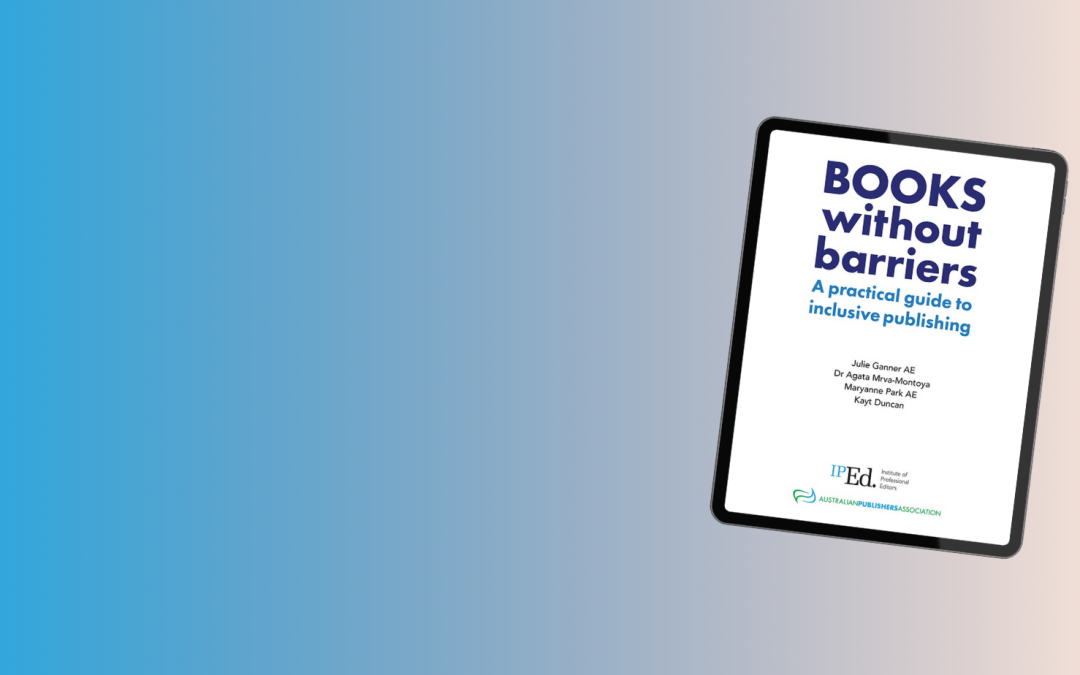By Julie Ganner AE
Imagine what it would be like if you couldn’t hold a book because you had a condition that gave you muscle spasms in your arms. Or you couldn’t turn the pages because you had arthritis in your fingers. Or you couldn’t see the words and pictures. Or you could see the text, but your eyes couldn’t track the lines and kept jumping around the page.
How would you read?
This is the reality faced by millions of people with disability around the world. Their medical conditions may mean they rely on assistive technologies such as screen readers, talking books or braille to read. However, these technologies are effective only if the content is provided in an accessible form.
The issue isn’t confined to books, of course. I recently underwent a minor medical procedure. All the information – the consent forms, the details on how to prepare for the procedure and where to go on the day – were emailed to me as PDF documents. I couldn’t help wondering what my experience would have been like if I had low or no vision. Unless the accessibility features in the PDF had been enabled (and these are not always reliable anyway), I wouldn’t have been able to use assistive technologies to read the material. Instead, I would have had to ask someone else to read the documents to me and fill out the forms on my behalf.
In other words, I would have had to share my medical details with another person even if I didn’t want to. So much, then, for my rights to privacy, independence and dignity – even though these rights are the guiding principles cited in legislation such as the Australian National Disability Insurance Scheme Act 2013.
Health information is only one form of reading from which people with a print disability may be excluded, and the issues don’t just apply to inaccessible formats. Other barriers include the use of purely visual language, chunks of text in italics or capital letters, images lacking useful alt text descriptions and tables with empty cells – to name but a few.
This is where editors come in. Our job is to ensure a writer’s message reaches the audience easily and without distortion. But we haven’t done that job properly unless we ensure the material can be perceived and understood in any format, and irrespective of the sense – sight, hearing or touch – people use to read it.
Editing for accessibility therefore needs to become as much a routine part of our professional practice as correcting grammar and spelling issues. This is why the new edition of IPEd standards for editing practice references accessibility in each section.
Can you spot potential accessibility issues easily? Do they jump out at you as automatically as spelling errors do? In my experience, clients are generally very receptive to making their content more accessible if they know what the issues are. However, they often rely on the editor to point these out – so we need to be up to the task.
Over the coming months, Gatherings will run a series of articles based on the information and research in Books without barriers. The aim is to help all editors become familiar with the main issues we may encounter during our daily professional practice. Eventually, editing for accessibility should become as natural as spotting typos.
IPEd is also planning a series of workshops on editing for accessibility in the year ahead, so please watch out for these.
Books without barriers is available for free download from the IPEd website in a choice of digital formats.
The following workshops are now open for bookings:

